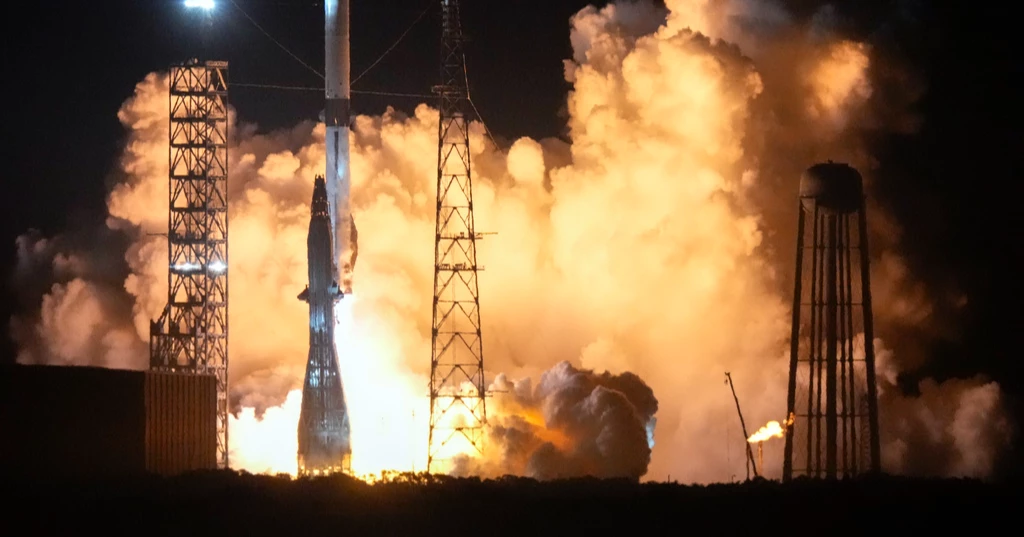Blue Origin launched its massive New Glenn rocket on Thursday, achieving a successful first test flight. The rocket carried a prototype satellite into orbit thousands of miles above Earth, reports AP.
Named after John Glenn, the first American to orbit Earth, New Glenn lifted off from Florida, launching from the same historic pad that sent NASA's Mariner and Pioneer spacecraft into space decades ago.
Two private lunar landers embark on roundabout moon journey
Funded extensively by Amazon founder Jeff Bezos, the 320-foot (98-meter) rocket featured an experimental platform designed to host satellites or deploy them into designated orbits.
Spectators on nearby beaches were thrilled as all seven main engines ignited, propelling the rocket through the predawn sky. Bezos was present at Mission Control, and cheers erupted from Blue Origin employees when the rocket successfully entered orbit 13 minutes after liftoff. SpaceX founder Elon Musk praised the achievement.
While the first-stage booster failed to land on a barge in the Atlantic, Blue Origin emphasised that achieving orbit was the primary objective. Bezos acknowledged the difficulty of landing the booster on the initial attempt, calling it “a little crazy.”
“We did it!” Blue Origin CEO Dave Limp celebrated on X, expressing optimism for future landing attempts in the spring.
Blue Origin attempts rocket launch again after last-minute delay
For this test, the satellite was intended to remain aboard the second stage while orbiting Earth. The second stage was programmed to enter a stable, high orbit to comply with NASA’s guidelines for reducing space debris.
The launch was delayed from Monday due to ice buildup in the rocket’s plumbing. New Glenn is designed to transport payloads and eventually astronauts into orbit and to the moon.
Founded 25 years ago by Bezos, Blue Origin has been flying paying passengers to the edge of space since 2021 using smaller rockets named after Alan Shepard, the first American in space. New Glenn, honouring John Glenn, is five times taller than its predecessor.
Blue Origin invested over $1 billion in New Glenn's launch site, transforming the historic Complex 36 at Cape Canaveral Space Force Station. The pad is located 9 miles (14 kilometres) from the company’s control centres and rocket manufacturing facility near NASA’s Kennedy Space Center.
Blue Origin plans six to eight New Glenn launches this year, with the next scheduled for spring.
In a weekend interview, Bezos refrained from revealing his personal financial commitment to the project. He dismissed comparisons with Musk’s SpaceX, noting, “There’s room for lots of winners” in this new phase of space exploration. He emphasised the industry's collective goal to lower space access costs.
Ancient DNA reveals women’s key role in Celtic social networks in Britain
New Glenn joins a line of recently launched heavy-lift rockets, including United Launch Alliance’s Vulcan, Europe’s Ariane 6, and NASA’s Space Launch System (SLS), which succeeds the Saturn V for lunar missions.
At approximately 400 feet (123 metres), SpaceX’s Starship remains the largest rocket. Musk plans another test flight for Starship on Thursday from Texas, aiming to repeat the booster recovery demonstrated in October, using giant mechanical arms.
NASA intends to use Starship for astronaut moon landings later this decade under the Artemis programme, which builds on the Apollo missions of the 1960s and 1970s. Blue Origin’s lunar lander, Blue Moon, is slated to debut during the programme’s third crewed lunar landing.
NASA Administrator Bill Nelson has championed competitive moon lander contracts, mirroring the dual-operator model for ferrying astronauts to the International Space Station. Nelson plans to step down when President-elect Donald Trump takes office on Monday.
Trump’s nominee for NASA Administrator, tech billionaire Jared Isaacman, has previously funded and flown on two private SpaceX missions. Isaacman’s appointment requires Senate confirmation.
New Glenn’s inaugural mission was initially intended to carry twin spacecraft to Mars for NASA last October. Delays in the rocket’s readiness forced NASA to postpone the mission, with the spacecraft now expected to launch in the spring. Named Escapade, the twin spacecraft will study Mars’ atmosphere and magnetic environment while orbiting the planet.
